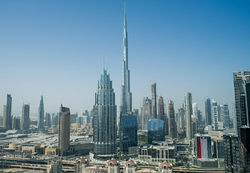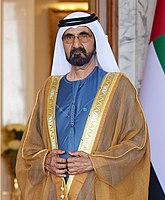Mina al-Majid: Difference between revisions
| Line 136: | Line 136: | ||
== Cityscape == | == Cityscape == | ||
== Government == | == Government == | ||
The announcement that Mina al-Majid would be one of several cities to be part of the [[New Generation Cities]] plan would result in complete transformations in its political and administrative systems. Though its overall governing system would remain firmly within the framework established across all post-unification Zorasan, it would undergo greater changes than other NG cities. In 1991, Mina al-Majid was proclaimed a [[Union Municipality]], this is an administrative unit focused around a singular urban area, though granted the same powers and responsibilities as a [[Union Republics of Zorasan|Union Republic]]. This meant that Mina al-Majid's authorities enjoy greater autonomy than other NG cities. Through this process, the Municipal Government is separated to a degree, from the city authorities, charged with maintaining utility services, transportation and city services such as refuse collection - the city authorities are ostensibly entirely subordinate to the Municipal Authority. | |||
{{multiple image | |||
|align=right | |||
|image1= Mohammed_bin_Rashid_Al_Maktoum_(15-02-2021).jpg | |||
|width1=165 | |||
|caption1= [[Governor of Mina al-Majid|Union Governor]] [[Hussein Al-Qasimi]] | |||
|alt1= | |||
|width2=200 | |||
|caption2= [[City Administrator of Mina al-Majid|City Administrator Naim al-Riyadhi]] | |||
|image2=City Administrator Naim al-Riyadhi.png | |||
|alt2= | |||
}} | |||
As a Union Municipality, it is headed by a [[Governors of Zorasan|Governor]], who is also the [[National Renovation Front|First Secretary]] of the local [[National Renovation Front]] and chairman of the [[Municipal Central Committee]], the highest decision making body within the city and its surrounding environs. The governor is elected by the [[Municipal Assembly]], the legislative branch of the city-government for five-year terms renewable once. The Governor, through his concurrent role as First Secretary appoints half the members of the Central Committee, with the other half appointed by the Assembly. One role the Governor appoints is that of [[Municipal Administrator]], the office tasked with overseeing city services and management. The Governor also serves as the premier interlocutor between the Union Municipality and the central Zorasani government, as well as its chief representative internationally. | |||
The Municipal Assembly is the legislative body comprising of 60 elected members, who are elected by [[District Committees of the National Renovation Front]], but not the general populace which is identical to the system operated nationally. The Municipal Assembly is tasked with overseeing both Municipal and City authorities, debate and vote on policies and strategies and hold to account varying municipal bodies. | |||
=== Relationship with Zorasani central government === | === Relationship with Zorasani central government === | ||
=== The Elite City === | === The Elite City === | ||
=== State Lottery === | === State Lottery === | ||
=== Urban Demographic Control System === | === Urban Demographic Control System === | ||
== Economy == | == Economy == | ||
== Transport == | == Transport == | ||
Revision as of 18:49, 23 September 2023
Mina al-Majid
| |
|---|---|
| Union Municipality of Mina al-Majid | |
 | |
| Nickname: "The Gateway" | |
| Country | Zorasan |
| Founded | 1349 |
| Founded by | Unknown |
| Government | |
| • Type | Union Municipality |
| • Body | Municipal Central Committee |
| • Governor | Hussein Al-Qasimi |
| • Deputy Governor | Khalifah Hamadi |
| Area | |
| • Union Municipality and special economic zone | 1,320 km2 (510 sq mi) |
| Elevation | 11 m (36 ft) |
| Population (2022) | |
| • Urban | 3,222,793 |
| • Metro | 4,103,600 |
| Time zone | UTC+0:00 (Zorasan Standard Time (ZST)) |
| ISO 3166 code | ZO-MM |
| GRP (nominal) | €121 billion |
| GRP per capita | €29,590 |
| HDI (2020) | 0.809 |
Mina al-Majid, officially called the Union Municipality of Mina al-Majid (Rahelian: بلدية اتحاد ميناء الماجد; Ab-Baladiat al'Itihad Mina al'Majid; Pasdani: شهرری اتحاد ماجد; Šahrdâri-ye Ettehad-ye Majed) is the most economically and technically developed city in Zorasan, and its first specifically constructed Special Economic and Industrial Zone. Mina al-Majid is located on the northern shores of the Riyadha Peninsula, bound to the west, east and south by the Riyadhi Union Republic and the Gulf of Parishar to the north. With a population of 4.1 million, it is Zorasan's eighth most populous city.
Founded in the 14th century as a small fishing village under the name of Beit Massoud, it would remain an obscure coastal backwater until the mid-19th century, when its bay was chosen to serve as a coaling station and Entrepôt for Soravia and its trade interests in the wider Gorsanid Empire. It would steadily grow into a relatively prosperous mid-sized trading hub before coming under Etrurian jurisdiction in 1893. Under Etrurian rule, the city's importance would decline against that of Ghalliah to the south, which would become a major hub for Etrurian and Euclean traders. In 1946, the city well within the newly formed Emirate of Riyadha and in 1953, it became a major city within the Zubaydi Rahelian Federation. During the decade and early years of the 1960s, the city witnessed the development of its first petrochemical industries, establishing itself as the secondary export hub alongside Khadal in neigbouring Irvadistan. The city would be targeted during the First Rahelian War, with at least ten airstrikes on the city and its oil industry, the city during the war also served as the base for the Red Officers Movement, who would go on to overthrow the Zubaydi federal monarchy in 1968. Under the United Rahelian People's Republic, the city's fortune would decline as the socialist regime focused on expanding Khadal and Ghallilah, this would result in a steady decline in population. The city was captured with little resistance by Union of Zorasan forces in early 1978 during the Second Rahelian War, the Union's victory and subsequent unification of the United Rahelian People's Republic with the rest of Zorasan would lead to the city's transformation.
In 1988, the city alongside Bandar-e Sattari, Ashkezar, Khadal and Chaboksar were declared to become special economic zones as part of the New Generation Cities project. The NGC, launched in 1990 dramatically reformed the city's administrative and economic systems, now boasting markedly liberalised trade and investment laws, Mina al-Majid, alongside the other cities saw consistently high economic growth and were hubs for urban innovations and renewal. Aided by high energy prices, the Zorasani central government invested considerable funds into fostering Mina al-Majid into becoming a centre for finance, digital services and high-quality manufacturing. In thirty years, the city's economy and population boomed and has since emerged as a hub for technology, international trade, and finance, particularly insurance and Irfanic finance. Since the late 2000s, the Municipal Government has worked to establish the city as a centre for luxury, tourism and the creative services. It is the home to the Mina al-Majid Stock Exchange, one of the largest stock exchanges in the world by market capitalisation and the largest in Zorasan. In terms of GRP per capita, it is the wealthiest city in Zorasan and hosts the largest number of millionaires and billionaires in the country, overtaking Zahedan in 2011. Owing to the city's success, it also operates one of the strictest rules on internal migration in Zorasan and is regularly regarded as an elite city.
Etymology
According to Gorsanid records, Mina al-Majid was originally named Beit Massoud (بيت مسعود; lit. House of Massoud), the name would remain in use until 1798, when it was renamed to Beit al-Kanz (بيت الكنز; Lit. House of Treasure) by decree of the local Gorsanid governor, who wished to celebrate the town's success as a producer of pearls and bountiful catches of fish. Beit al-Kanz would remain the name under Soravian rule, but would change in 1893, when Etrurian colonial authorities renamed to Porta Nord (Northern Gate), in reference to its role as a entrepot and transit hub for goods entering and leaving Etrurian Rahelia. The name also links to the Etrurian twinning of the city with modern day Soltanabad, which they had renamed as Porta Centurione (Centurion Gate), this in turn related to its role as a defence along the Zorasani-Shangean border. Following the collapse of the Etrurian colonial empire in 1946 and the independence of the Emirate of Riyadha it was renamed to Mina al-Riyadha (مينا الرياضة, lit. Port Riyadha) in 1948. This name would again, remain in use until 1989, when in celebration of the city being earmarked for the New Generation Cities plan, it was renamed again by popular referendum vote to Mina al-Majid (مينا المجيد, lit. Noble Port).
History
Beit Massoud
Beit al-Kanz
Porta Nord
Mina al-Riyadha
Founding of modern Mina al-Majid
Development and boom
Present
Geography
Cityscape
Government
The announcement that Mina al-Majid would be one of several cities to be part of the New Generation Cities plan would result in complete transformations in its political and administrative systems. Though its overall governing system would remain firmly within the framework established across all post-unification Zorasan, it would undergo greater changes than other NG cities. In 1991, Mina al-Majid was proclaimed a Union Municipality, this is an administrative unit focused around a singular urban area, though granted the same powers and responsibilities as a Union Republic. This meant that Mina al-Majid's authorities enjoy greater autonomy than other NG cities. Through this process, the Municipal Government is separated to a degree, from the city authorities, charged with maintaining utility services, transportation and city services such as refuse collection - the city authorities are ostensibly entirely subordinate to the Municipal Authority.
As a Union Municipality, it is headed by a Governor, who is also the First Secretary of the local National Renovation Front and chairman of the Municipal Central Committee, the highest decision making body within the city and its surrounding environs. The governor is elected by the Municipal Assembly, the legislative branch of the city-government for five-year terms renewable once. The Governor, through his concurrent role as First Secretary appoints half the members of the Central Committee, with the other half appointed by the Assembly. One role the Governor appoints is that of Municipal Administrator, the office tasked with overseeing city services and management. The Governor also serves as the premier interlocutor between the Union Municipality and the central Zorasani government, as well as its chief representative internationally.
The Municipal Assembly is the legislative body comprising of 60 elected members, who are elected by District Committees of the National Renovation Front, but not the general populace which is identical to the system operated nationally. The Municipal Assembly is tasked with overseeing both Municipal and City authorities, debate and vote on policies and strategies and hold to account varying municipal bodies.



